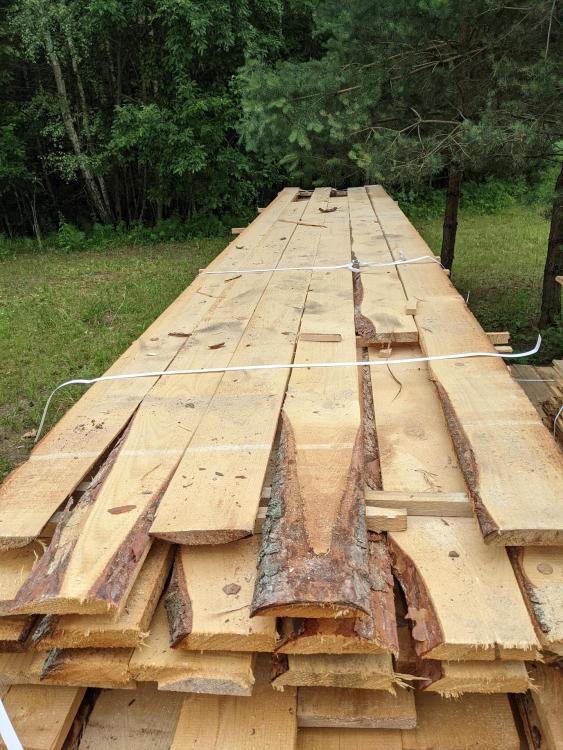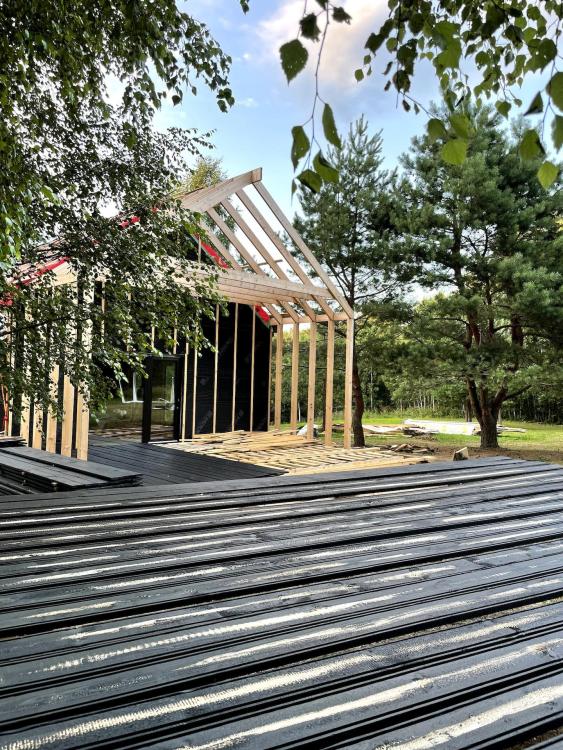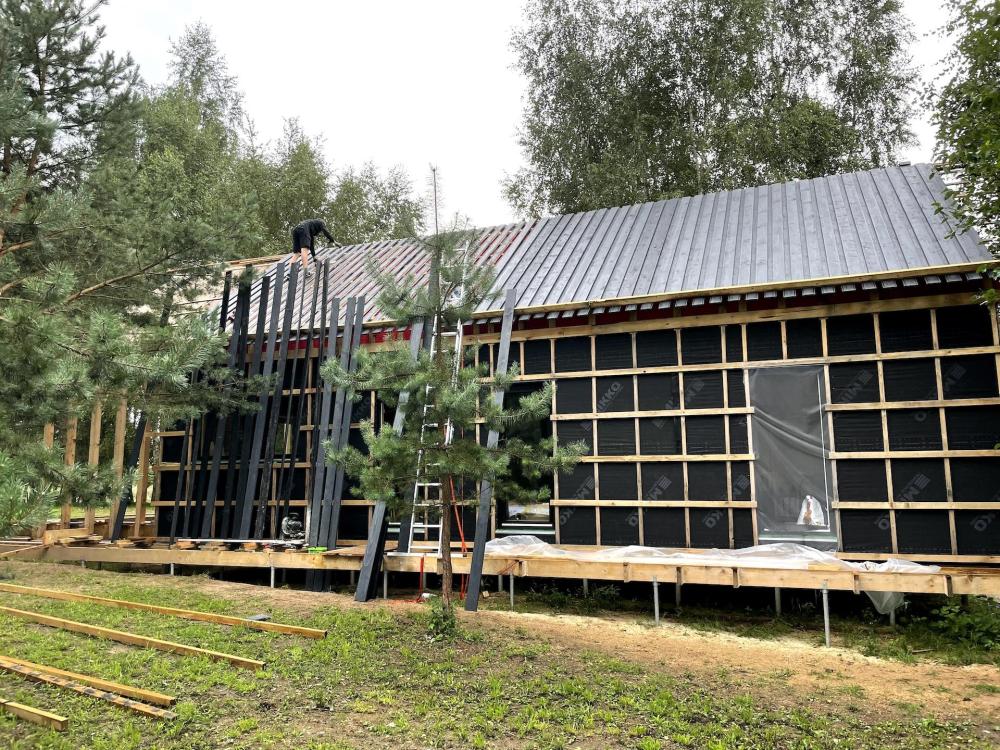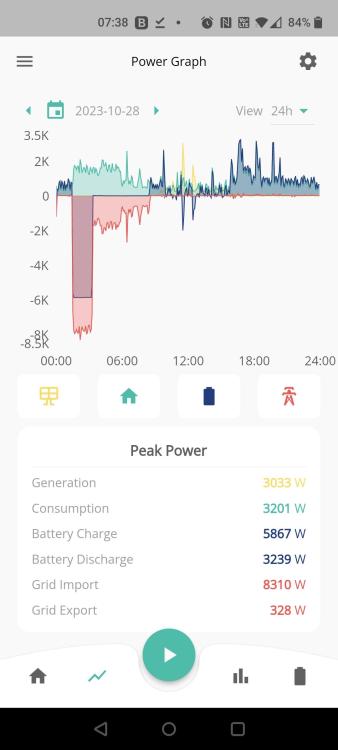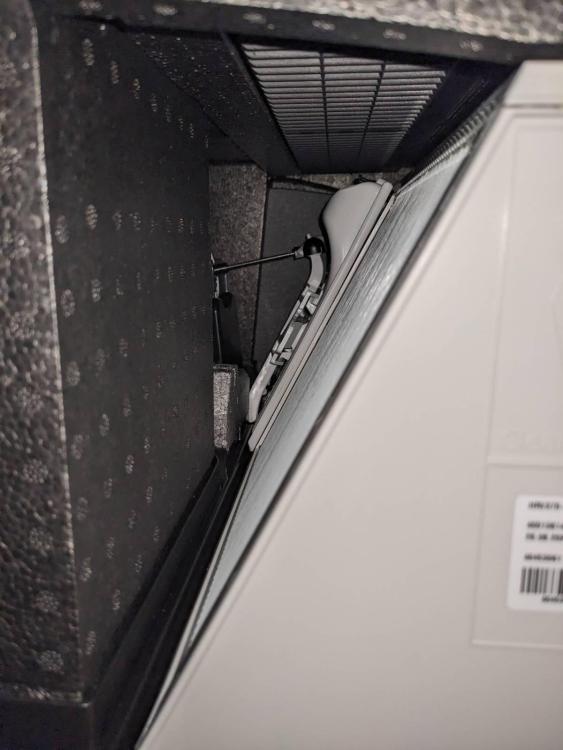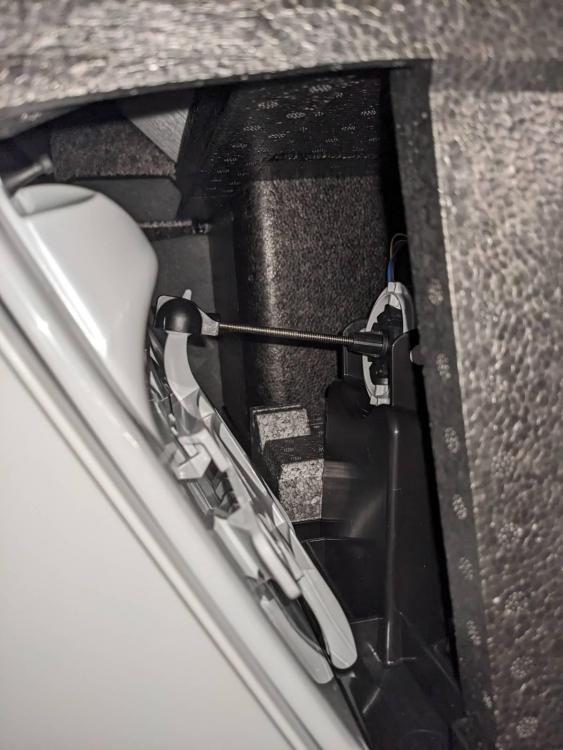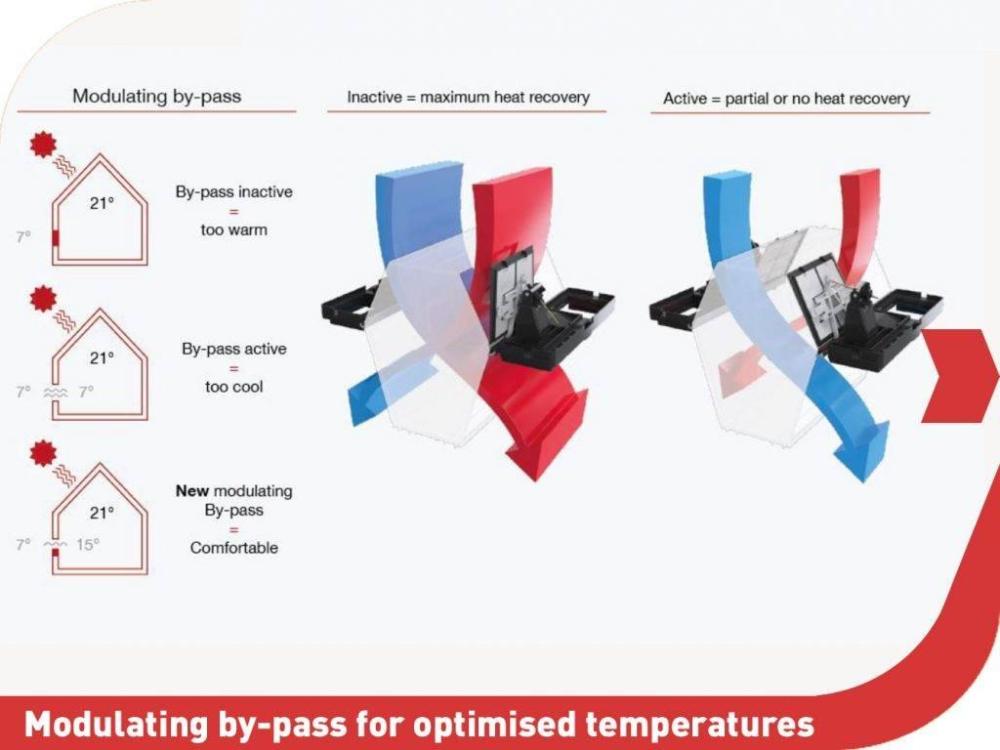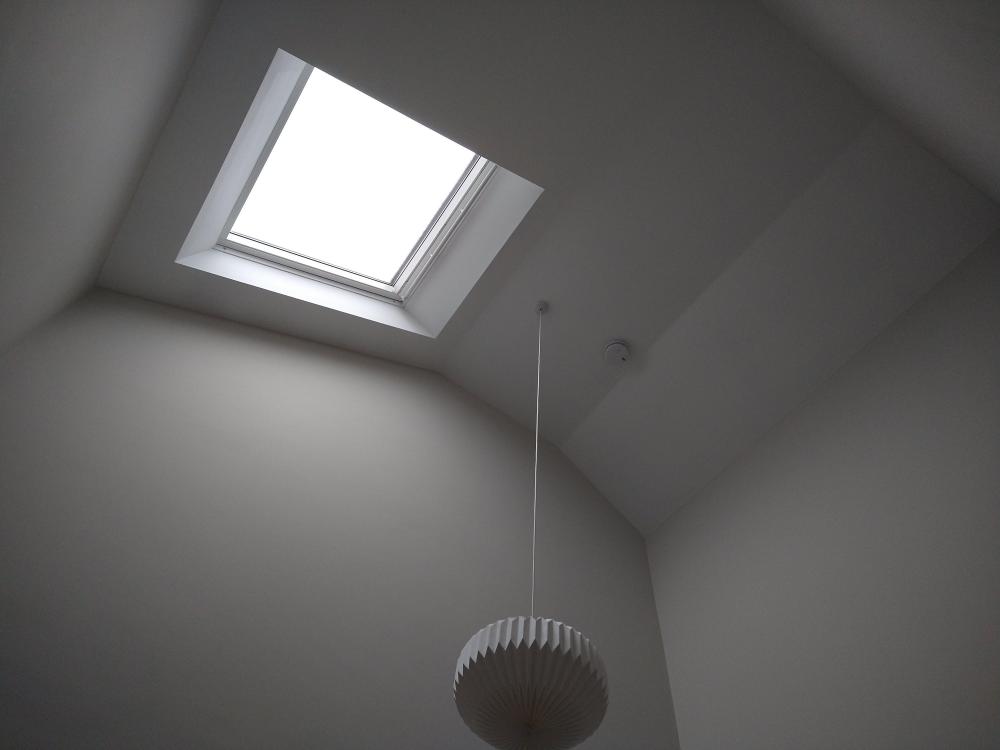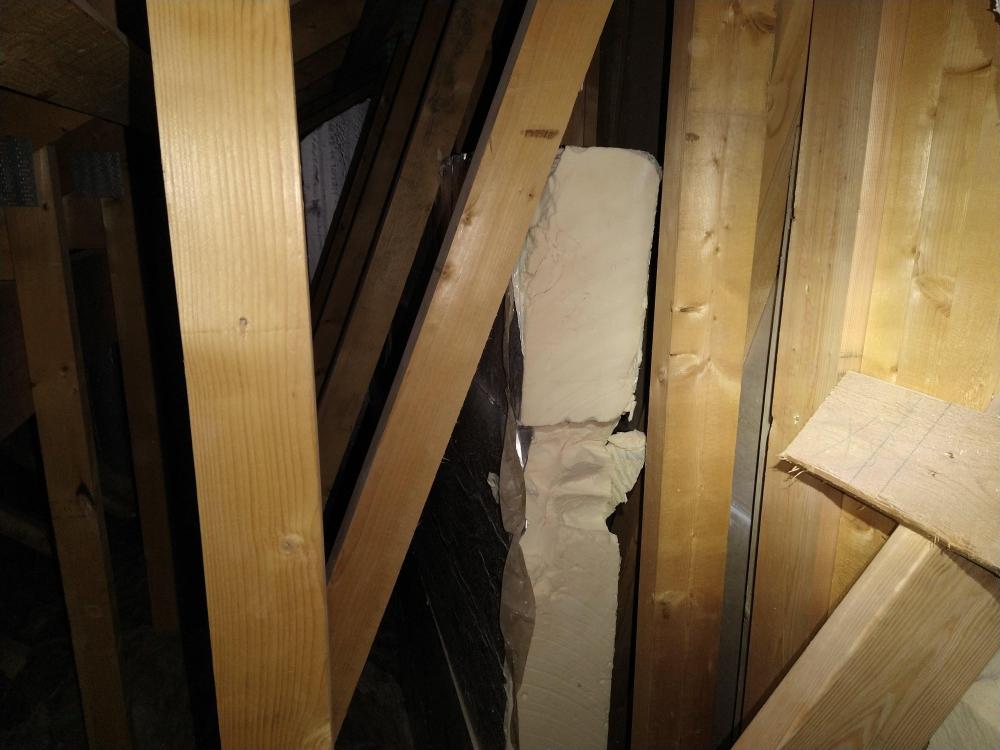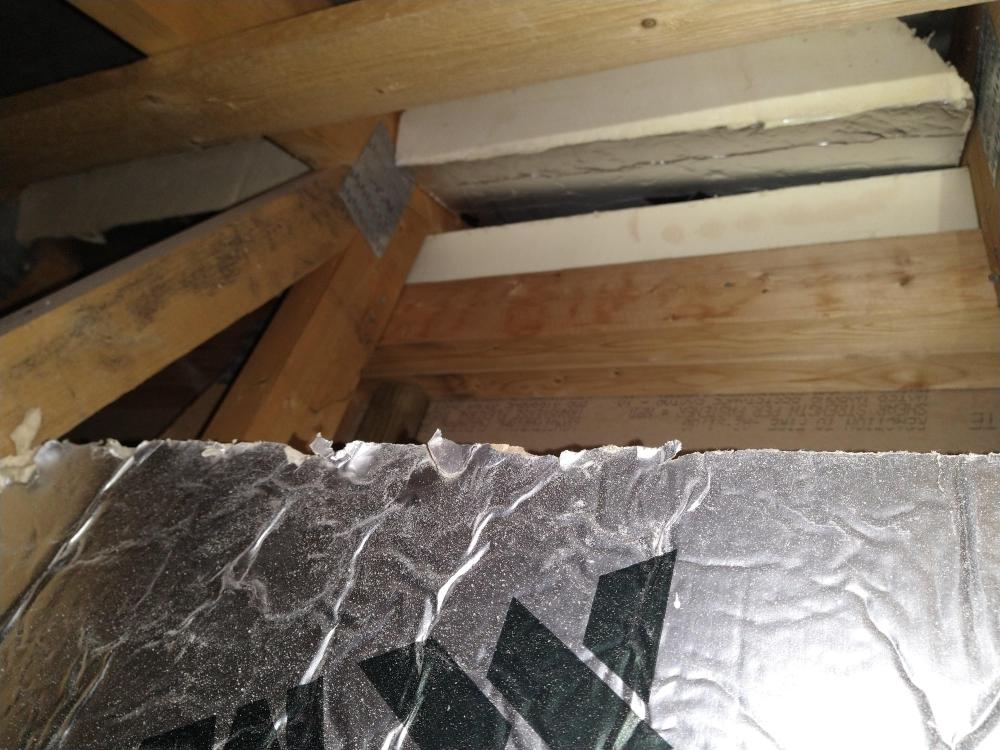Leaderboard
Popular Content
Showing content with the highest reputation on 10/29/23 in all areas
-
You can make any window into slimline appearance externally by overlapping external insulation and render over the frame. Improves thermal performance and can help with airtightness too3 points
-
Normally once you start building and building control (or equivalent) are involved, then changes to building regs mid build do not apply, you carry on working to the building regs in force when the build was started. Missing insulation sounds like a failure of the builder and failure of the building control body to notice.2 points
-
2 points
-
Is Aircon. Think it is the amount of energy to cool a ton of water 1⁰f.1 point
-
If you have fallen out with your original installer, probably the best thing you can do is seek out a local to you heating engineer, or dare I say an electrian that understands heating system would be the best person. It is a question of first understanding how the system is plumbed and wired and then methodically going through everything to make sure the right demands are in place and the correct motorised valves actually open and pumps pump when they should. Remote diagnostics on a forum I fear are not going to resolve much. And someone that knows the Ecodan heat pumps care to enlighten us what an L9 fault means please. P.S I don't rate your original installer very highly. He has never heard of pipe insulation up in a cold loft.1 point
-
In the US of A, they measure houses in feet, but oddly don't use fluid oz for volume, they stick to cubic feet per minute. As an aside, when I listen to energy traders/experts on the radio talking about 'the energy crisis', they keep talking about the price of a therm pf gas. And the government uses barrel of oil equivalent in reports. And how often do we hear someone say they use a lot of energy, then say it is "£300 a month". SI and the derived units are so easy to understand.1 point
-
The house is measured in metres so its volume in m3 is an easy calculation, air changes an hours (ACH) is m3/h - an easy outcome, so the maths in the same units is super simple. Changing the litres/second don't see the point. House 200m2, 2.5m tall, is 500m3, 0.5ACH, is 250m3/hr. All maths done in the head, my flow meter works in the same units, you just need to work out the room flow rates from there. Why bother the litres/sec1 point
-
Let’s be honest the developer will blame everyone else in this matter, you will get stressed. they will put more effort into not doing the work, this will go on for months/years they will then realise they have some retention monies from the original contractor held back and use this against them and the same muppets who fitted it will come back to rectify it, blaming more people. it will still be rubbish and then the arguing starts again. might be better to try for a cash settlement and find a decent handy person yourself/diy.1 point
-
Hi @FuerteStuActually I had noticed this and forgotten. Yes I had to do the screws up and down prior to installing . But only a few had the problem.1 point
-
1 point
-
Could you contact the Local Authority building control? The houses behind me were signed off by independents, and they had zero surface drainage fitted and none of the roof tiles were fixed down... When LABC got involved the builders soon got their act together and righted the wrongs.1 point
-
1 point
-
1 point
-
Why. After you have built whatever you are building you will find that fat or thin mullions is something that was not important, but a good quality airtight good u value window is more important. I spent days mocking up dummy frames to see how thick they would look, our sliding door has double the frame compared to the windows, now there in I never notice the difference, but I do notice how airtight they are and how the keep the heat in or out.1 point
-
That is abysmal workmanship. What little insulation there is on the upstands is doing absolutely nothing by virtue of the fact cold air can get behind it. To do that properly is going to take some care to fit the insulation a nice and snug fit, foam in the gaps, and tape the joints so everything is enclosed nice and snug with no path for cold air to bypass the insulation. And sadly what most of us know of mass market builders is the chance of actually getting them to do it properly is quite slim. But you have to try and if it is not done right keep banging away at them. When you do get them to do it, please post pictures as they go.1 point
-
1 point
-
1 point
-
No one in their right mind would drill up through the frame and through a cavity tray.1 point
-
It's call commissioning, that's why so many installs are pants, it just not done, there is plenty of fine tuning to do. Then you need to run it different modes to find out which is most effective from a heating perspective and running costs.1 point
-
Yes, but why the scepticism? This is partly conservatism, that is with a small c, but an awful lot is because of the FUD propaganda in many sectors of the press and news. OK this is partly klick-bait driven, but a lot is it is funded by fossil fuel money.1 point
-
Hi. Looking for some opinions and/or guidance. I have a small mid-terraced house circa 1880. Ground floor is stone flags just laid over rubble/clay/ mixed stone etc. I have 2 issues which i would like to address, namely some damp patches showing through the stone flags and cold floor. I have considered various options including:- 1. Excavating and laying DPM, concrete, insulation etc. 2. Excavating and laying geotextile membrane, foamglass, screed and timber floor on top. 3. Constructing suspended timber floor above existing using decking feet. This would mean minimum 150mm void, ventilation and associated introduction of cold air which in turn means insulation on top of the 150mm already. Due to location up a flight of stairs onto a raised terrace, and very limited access at the back, every builder has sucked their teeth, hummed and haaaard and then not come back, cut off contact or submitted daft quotes to avoid the work. Presumably because they are put off at the prospect of a bit of physical work and want a quick buck. I have a lot of experience in property renovations so am happy to carry out the work myself but don't want the upheaval of digging the floor up (currently living in the house), especially as i would be doing it on my own and by hand. Ground floor rooms are high ceilings, so i do have height to play with. I am now considering the following. 25mm blinding sand over the stone flags to level them out. DPM lapped up to current DPC (Chemical) 100mm EPS. Vapour layer. 18mm T&G OSB3 Underlay. Engineered wood floor. I would appreciate any observations or suggestions, preferably constructive ones! TIA.1 point
-
Max speed of 60% and try that? edit: pump min of 20, max of 75…. Seems to be throttling back a bit more. Still need to get balancing and figuring out the flow direction.1 point
-
For those not aware how the battery and time of use tariffs work to together, I have a screenshot from the battery app So the above is 24hr window. In this view the cheap rate period was from 01:30 to 08:30. Below the 0 line is power either being taken from the grid or being added to the battery. Above the line is consumption and solar being generated. Starting on the far left, the blue section starting at midnight is the battery being used to supply the house. At 01:30, the big dark red section dropping down is the battery being charged, the lighter red is the total imported electric for battery charging and supply to the house. Once the battery is fully charged it stays unused until the end of the low tariff window at 08:30. The red wiggly line showing electric being imported, this line stops at 0830. It's a mirror image of the consumption in green above the 0 line. Above the 0 line, the green section is mostly the ASHP running with an electric heater and other background loads. These are all running on cheap rate electric, until 08:30. The remainder of the day is the general house loads bing supplied in blue from the battery. The yellow spikes and green areas are solar either supplying the house or adding charge to the battery. The downward spikes around midday are the battery being charged via solar.1 point
-
Thanks @joe90. We wondered if we could do that. There is a guy in the village who specialised in air source heat pumps so he might be the one to ask.1 point
-
@SteamyTea, I like your first-cut analysis. It tells a tale. So ~£3Bn for 60 GWp generation and 500 GWh storage at ~£160Bn. I note that current LFP pack prices are around £100 / kWh at scale, or £100M / GWh, or £50bn for 0.5 TWh. Though at those sorts of volumes we'd probably be looking at Na based chemistries which are projecting to be nearer £50 / kWh, so maybe nearer £50Bn. There are also going to be other Engineering curve economies of scale at those sorts of volumes. We also need to factor in other storage technologies such as pumped hydro, ultra high temp heat batteries; and the flexibility of other non-combustion generation options: windfarm scaling, etc. and geographic spread using interconnectors. There are also games that you can play with overabundance (e.g. go for 3× or 180 GWp generation at an extra £6Bn which will create all sorts of business options for what you can do with the excess (e.g. green hydrogen 🤢). So yes, there are lots of cheaper options that we could develop with the international political will; ones that would make society better for our old age and our children's. The challenge is that we've got a lot of old and powerful men whose wealth is tied up in extraction/ mining, refining and burning stuff and who don't mind investing a little of it in lobbying, 'think tanks', etc.1 point
-
For a VoIP direct WiFi (not DECT) handset, I like my Grandtsream WP810. https://www.netxl.com/wifi-phones/grandstream-wp810-portable-wifi-phone/1 point
-
Well if you take the average household gas usage of 15 MWh and divide it by three, then multiply it by 30 million, you get an extra demand of 150,000 GWh. If we say that an average car does 12,000 miles a year, and does 3 miles to the kWh, then with around 30 million cars on the road, 120,000 GWh. So an extra 270,000 GWh a year. Now the car mileage is probably evenly distributed, so 10,000 GWh/month. Heating is probably similar to our current electricity demands, so 55% of it spread over 7 months. So a monthly mean of around 12,000 GWh/month, but varying between 8,000 and 15,000 GWh per month. So at worse, somewhere around 25,000 GWh extra. Divide that by the 31 day sin December (probably the worse month on average) then that is 810 GWh/a day. Daily usage is currently around 804 GWh/day. So we need to double the land area and the costs. Still very achievable (if my sums are right).1 point
-
I think you get about a 2 MWp of solar on a hectare. But let us say we can only use a quarter of it for PV effectively i.e. large enough grid connections, access, lease conditions etc. So 0.5 MWp. 120,000 x 0.5 = 60,000 or 60 GWp which is almost as large as the total capacity of the UKs generation. Picking Leicester, as it is about halfway up England, and punching in an optimally angled, 1 MWp installation into PVGIS, it shows a December output of 37 MWh, or about 11 MWh/day. Multiply that by 6,000 to match the potential resource, that could supply 66 GWh/day. A quick look at December 2020 Grid Watch demand figures shows a mean power of 33.5 GW. The peak is 47.3 GW. I would think, before land rental and connection charges, a PV farm would cost about £500,000/MWp. So 60 GWp would cost £3bn (about a sixth of what has been spent on Hinckley Point so far). OK, so storage is needed, and a lot of it, as in December all the generation is done in 9 hours, leaving 15 hours of darkness. Looking at Grid Watch again, the mean darkness demand is 31 GW, with a peak of 42 GW. So the storage would have to be in the region of 500 GWh. If a car has 50 kWh of battery storage, a million of them will have 50 GWh. I think Tesla has already made over 2 million Model 3s, so 1 company has already used, in just one of their model range, 100 GWh of batteries (the Model 3 has a battery between 57.5 and 82 kWh, but you get my point). So battery manufacture is not really an issue in this one off case, and anyway, it would be installed in phases, so spread over a few years to match the PV installation. Now I really do not have any idea what that battery storage would cost, but the unit that Tesla fitted in South Australia cost about A$90m for 150 MWh, so a quick convert to English and that is £320,000/MWh. So 500 GWh would cost around £160bn. About the same as 8 to 10 new nuclear reactors. So the total cost, to run the UK purely from PV and storage is less than £200bn (I have added a bit to cover land rental and running costs, though there should be a 'British Management' premium) . How much as been spent on HS2, £98bn so far? December 2020 electrical usage was 24,888 GWh. If we divide £200bn by 25,000 GWh, that is £8/kWh. But that would be putting all the investment onto just 1 month. A quick look at Grid Watch again and I have calculated that December 2020 used 10% of the annual electrical production (May was the lowest at 6.8%). So that means we could calculate the electricity price at 80p/kWh, if we put all the costs into 1 year. Well that would be a bit silly, so if we amortised it at 7.5 years, then the generation, storage, and probably delivery price (as I added a few million on for that), would be 11p/kWh. About a third of what we currently pay, but that is a wholesale price, so maybe a few changes in the electricity market are needed (not as if we can't do that quickly, we did last year). Back to the land area, I used a quarter of the 120,000 hectares, so 30,000 hectares. England has a total land area of 130,310 km2 or 13,031,000 Ha. 30,000 / 13,031,000 x 100 = 0.23% I think that is known, in general terms, as (expletive deleted) all. (now I have been mixing kWh, MWh, GWh, km2, hectares, pennies, £, £bn etc, so may have made an error, if I have let us find it and put it right so we can use a definitive answer to this question). Oh, and @ProDave, I have used just England land areas, but the electrical demand includes all the colonies you are in.1 point
-
Stainless steel screws around 100mm. Recess heads about 15mm. So 35mm in the horizontal and 65mm in the vertical. Might get away with slightly shorter. Quite a generous pilot hole as stainless steel screws not as strong and can shear if too much torque needed.1 point
-
Starting with a simple rectangular opening (as you would for a door) you just add a rectangular frame/bead, then the glass then another bead. One side the bead can be glued and pinned in place. The other side just pinned in case you need to replace the glass. You can run a sealant around before fitting the glass to stop daughts and rattles. The shape of the bead can be a simple square/rectangle or a moulding to match elsewhere. Ideally mitre the corners but not essential. If it's going to be a double glazed unit the vertical thickness of the bead needs to be sufficient to hide the seal and some extra to allow for the fact the glass needs to be cut slightly underside and then packed to centre it in the opening. Both panes should be supported by any packing. Beware fire regulations. For example if this new wall is separating stairs from habitable rooms in a 3 storey house (inc 2 story with loft conversation). Might need to limit size of glass, and change how it's fitted. Possibly even wired glass? Think it also needs to be toughened glass as below ?? mm from floor level. Same for door.1 point
-
Many thanks for the responses guys. For sure the system is not balanced room-to-room. But the overall air resistance across supply vs extract is pretty balanced, and the machine appears to be adjusting the fan speed to match the flow rates anyway. My understanding is that overall extract/supply flow rates need to be matched to get optimal heat exchange performance. I double checked the connections and pretty sure they're right. It's a right hand unit, so external on the left, internal on right right like the attached picture. I called Zehnder support. He mentioned they once had a case of the bypass actuators failing. I took the front panel off and indeed the bypass actuators aren't doing anything on change - except a brief buzzing noise. From the pictures I could find, it looks like they're both stuck in bypass mode. Hence the limited heat recovery. I'll be in touch with Paul Heat Recovery (supplier) or Zehnder on Monday. Hopefully it can be repaired in place!1 point
-
@flanagajat fist glance it appears that the architect has been very sensible in not removing any of the exterior walls which will save £££ . You have already said you only want a shell so and you want to keep the costs down so I would be getting quotes for the groundwork, bricks and blocks from a general builder including knocking through and making good,the roof and window quotes. This will give you a ballpark number to work off and see if it's feasible financially for you. You already have some numbers above what others think it will cost but the only way to know for sure is to get the numbers for your project in front of you . The numbers for our build come with a big false hope alarm attached to them, our shell which sits on a 300m2 foundation and has 120m2 room in roof space ,including the roof tiles and roof lights all the glass and doors and both drainage systems came in at less than 200k .1 point
-
So did i on my build but got a local plumber to sign off the UVC. BC never asked for this and no mention of the plumbing 🤷♂️1 point
-
Frankly I would argue that Condition 2 fails at least two of the 6 tests that conditions have to satisfy to be valid, if used to control the gym. These tests are: Necessary, Relevant to planning, Relevant to the development to be permitted, Enforceable, Precise, and , Reasonable in all other respects. Is control of the use of the rooms within a dwelling "necessary" and is it "enforceable"? Why would it matter in planning terms if the gym space was used as an art room, a yoga space, a store room or a spare bedroom? Equally how would the planning authority find out what the space was used for and enforce the condition? Clearly the condition is unnecessary and unenforceable when used to control the internal use of rooms. For the planners to suggest they will not consider room uses because they have been "fixed" by the condition is stretching things just a bit too far... Furthermore, Section 55 of the Town and Country Planning Act makes it quite clear that works affecting the interior of a building do not constitute development for the purposes of the Act. That condition cannot be used to prevent future internal alterations especially if not relevant to the original approval. However, AliG sums up the situation for you in their last post. That gym window was always at risk being so close to the boundary and the upper rooms have double aspect windows. It may be a lost cause I'm afraid.1 point
-
Follow up - New earth rod fitted by myself and tested by certified electrician - better impedance than the one currently in place (very pleasing result). Supply and meter moves this week, electrician allowing me to move the CU and tails, and sockets to new location.1 point
-
1 point
-
If you do the floating floor it is best to use 22mm t&g chipboard and bond the engineered floor to it. The adhesive is pricey but it feels a lot more solid.1 point
-
1 point
-
Tufty’s plant room definitely looks the business..I definitely would go as big as is comfortable to. We had 1.8m x 2.7m and it has ended up a touch too snug because we originally did not plan for one and split our generous utility room to create ours. All our MVHR equipment, Solar PV set up and batteries, Hot water cylinders, Buffer cylinder, Water softener..blah blah..will be lucky to get a little space left over to put the rechargeable vacuum cleaners out of sight.. Fermacell sounds a brilliant idea for maximising wall placement… as does making sure that there are good heat smoke alarms installed .Earlier on in our design process ..researched Plant rooms as I had this same question and there was precious little info out there..Really informative thread!1 point
-
TBC, but likely a cold-roof with PIR between joists and PIR/plasterboard combo over, sealed at the edges joining with the wall insulation. So order of build is likely to be: New roof construction Insulation on walls (dabbed) Insulate between ceiling rafters and run wiring for ceiling lighting Insulate floor + chipboard Insulate ceiling with PIR/plasterboard and seal all joins Battens to walls and fix plasterboard1 point
-
Wiring would go in the battened service void between the celotex and the plasterboard. No need for conduit unless you want it.1 point
-
Hi all, firstly apologies if I've posted on the wrong board, this seemed most appropriate. We purchased a new build in England in Feb 2023, immediately noticed it was quite cold, thermal survey showed issues with seals around windows and the loft. Upon inspection immediately apparent that insulation is patchy and missing in a lot of places. It is a cold roof space with then a vaulted ceiling section above the stairwell which protudes into half the roof space which should be a warm roof construction. The flat ceilings are obviously missing a fair bit of insulation roll, some areas with none, and those that have it rarely meet 270mm. They are also all laid between joists with no second layer perpendiculor to cover the joists and the gaps. However, the real issue is that the vaulted ceiling area does not have sufficient PIR boards around it to form a continuous envelope. The walls of the ceiling area have huge gaps and missing sections opening the back of the plasterboard directly to the cold roof space. There are some 150mm boards pictured but well away from the plasterboard so providing no use. Then above the pitched celing of the vaulted ceiling area there are 90mm boards between the rafters, many of them pushed too high to block ventilation, and 75mm boards under the rafters before the plasterboard. Unfortunately neither of these form a continuous envelope with the wall sections so just open up to cold roof space at the ends where they meet the walls. There is a gap between the 90mm between the rafters and the 75mm below the rafters in most runs also allowing cold air through. After 6 months of pestering we have a the developer coming to have a look at it this week, along with getting some local firms to quote to do the work to bring this up to building regs. We're still in the 2 year defect period and potentially forsee having to go all the way through to the financial ombudsman on other issues anyway as the developers are crap and very aggressive/avoidant. I'm struggling to find/interpret what the minimum PIR board thickness on pitched warm roofs for new builds is? As whilst some say 140/150mm for conversions and extensions, I've found others saying that for new builds it could be 270mm even for PIR boards? I'd really appreciate any input and thoughts anyone could give, thanks so much!0 points
-
Not that I know of, however I find it very fishy that both he and the council used the same words about the height isn't required for a domestic garage. He is definitely petty, We put our bin out on the path (for bin day) and then he moves it closer to our drive way because he feels it's on his part of the path..0 points




